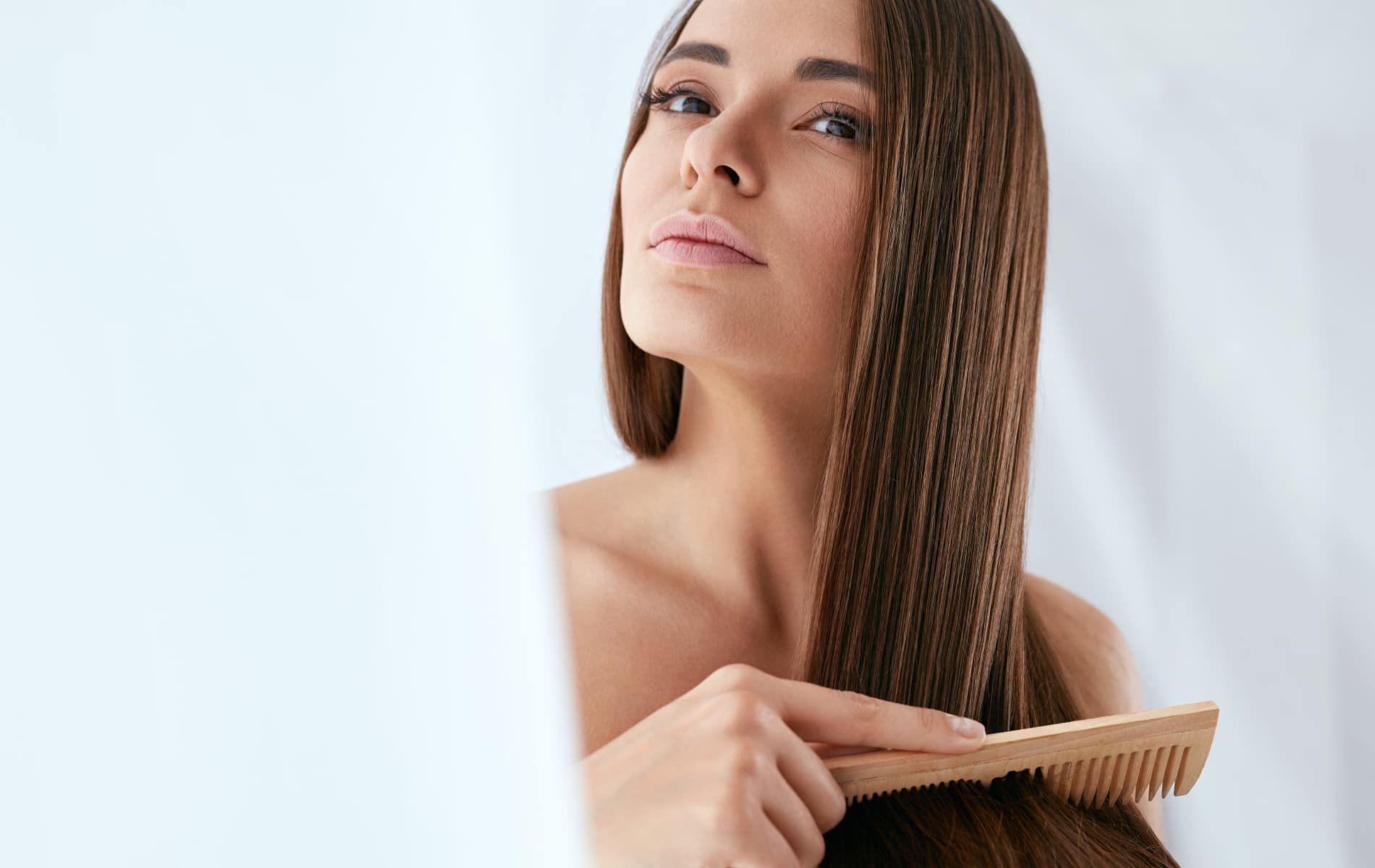The phases or stages of hair growth exemplify how much is involved with the hair growth cycle, which many people do not think about most of the time. The four stages have been the subject of in-depth study to understand hair growth and what steps can be taken to prevent premature hair loss.
The anagen phase, telogen phase and catagen phase are the parts of the hair growth cycle that involve the hair follicle activity and the hair's growth and maturation. The exogen phase is the final phase, when you will shed old hair, which will usually be replaced with new hair.
Timelines for each phase can be affected by your health, nutrition and age. There are actions you can take to help your hair stay healthy. Read on to learn more about the hair growth process.
The Hair Growth Phases
1. The Growing Stage, or Anagen Stage
The anagen phase is the beginning of the growth cycle. Have you ever wondered, “How long does it take hair to grow?” This phase is the longest, taking, on average, three to five years for the hair on your head. In some cases, single strands might take seven or more years to complete the cycle.
This phase also differs slightly for different hair types. As an example, scalp hairs will take longer to grow than eyebrow or pubic hairs.
When your hair is in the anagen stage, your hair follicles keep pushing your existing strands until they eventually fall out or are cut. As many as 90% of the hairs on your head at any time are in the anagen growth phase.
2. The Transition Stage, or Catagen Stage
The catagen phase follows immediately after the anagen stage, usually lasting about ten days. Hair follicles shrink during this phase, and hair growth will slow. During this period, the hair stays in place but will separate from the hair follicle.
At any given time, 5% of the hairs on your head are in the catagen stage.
3. The Resting Stage, or Telogen Stage
In most cases, the telogen stage lasts about three months. About 10 to 15% of your scalp hairs are in this phase at any given time.
During this particular phase, hairs neither grow nor fall out. During the telogen stage, follicles that have shed hairs during catagen will start to form new strands.
Some health experts consider telogen to be a shedding phase; however, the next stage is more accurately described as a shedding stage.
4. The Shedding Stage, or Exogen Stage
The exogen phase is closely related to the telogen stage. When hair is in the exogen stage, shedding will occur, often with assistance from washing or brushing. During this phase, it is not uncommon to lose 50 to 100 hairs daily.
Exogen can last two to five months, and new hairs will keep growing as the old hairs fall out.
Keeping Your Hair Healthy During All Phases
Genetics and hormone levels, which are mostly outside your control, impact your hair's health, as do proper care and a healthy lifestyle, which you can control. For healthier, fuller hair, you can follow some useful tips:
Follow a Good Hair Care Routine
Choosing the right shampoo is essential. You'll need to select shampoo based on your hair's unique needs, such as shampoo for color-treated, thin, dry or oily hair.
You'll also need to carefully select a conditioner in the same way. Trial and error may be necessary to determine which of these products are the best for you.
Gentle care is also necessary for healthy growth. Avoid exceptionally hot water when shampooing, and gently towel-dry your hair. If you opt to blow-dry, use lower heat. Your hair will be most vulnerable to damage while wet.
Reduce Your Stress Level
According to the Mayo Clinic, there are three stress-related conditions that can lead to premature hair loss. These conditions are:
Alopecia areata - a condition where your immune system attacks your hair
Telogen effluvium - a disorder where the growth phases are accelerated, leading to increased hair loss
Trichotillomania - hair-pulling caused by a psychological condition
Avoiding daily stressors in your life as much as possible can help, along with practicing breathing techniques, meditation or yoga. You might also benefit from counseling.
Eat a Nutrient-Rich Diet
Hair is mostly made up of protein, which means protein is an essential part of your diet. Some of the foods that contain healthy protein include:
Women should get more iron, along with vitamins C and D. Vitamin B12, folic acid and zinc are also nutrients that should be considered.
Keep an Eye on Hair Health
Hair growth's four stages are anagen, catagen, telogen and exogen. Each of these phases lasts for a different amount of time. Being gentle when caring for your hair, reducing your stress levels and eating a healthy diet can play a role in keeping your hair healthier.
Consult with your doctor if you feel that your hair loss rate is progressing faster than usual. Underlying medical conditions can be at the root of accelerated hair loss. The sooner you seek assistance, the more likely it is you can keep your healthy hair and slow any loss.
